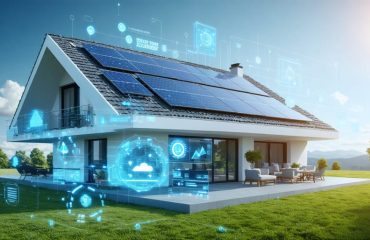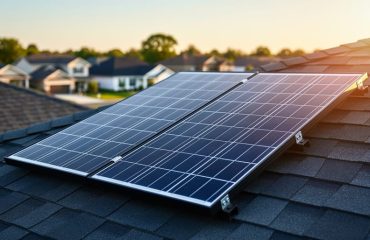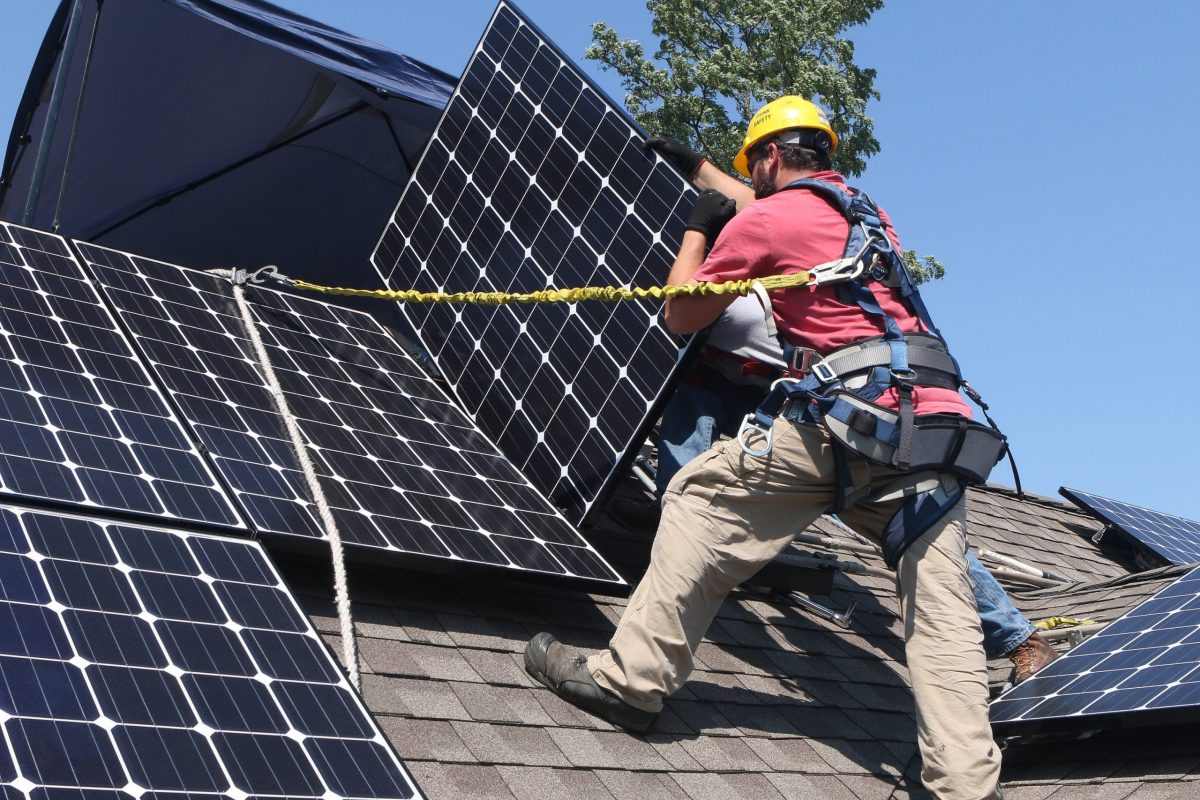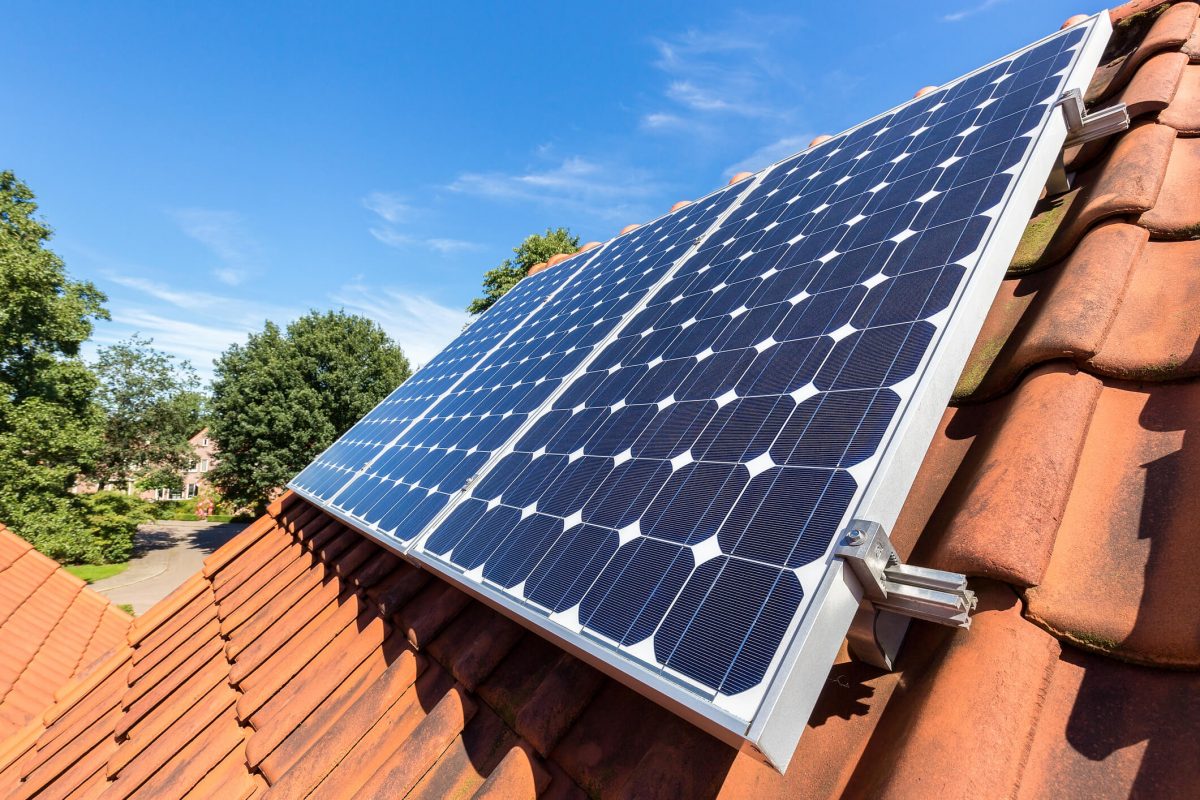Your home is making hundreds of energy decisions every day—and right now, most of them are wrong.
Every time your solar panels overproduce while your dishwasher sits idle, every time you pull expensive grid power while your battery has capacity to spare, every time your air conditioner battles your water heater for limited electricity—you’re leaving money on the table. Traditional smart home devices can’t fix this because they operate in isolation, each one blind to what the others are doing.
Energy management systems powered by edge computing change everything. These intelligent systems process data locally in your home, making split-second decisions about where your electricity goes, when to store it, and when to use it. Unlike cloud-based solutions that send your data across the internet and back, edge computing means your home responds instantly—routing solar energy to your EV charger before grid rates spike, or preemptively cooling your home during cheap afternoon hours.
The result? Homeowners typically see 20-30% reductions in electricity costs, not through sacrifice or lifestyle changes, but through smarter orchestration of the energy equipment you already own. Your solar panels, battery storage, major appliances, and EV charger finally work as a team instead of competitors.
This isn’t futuristic technology—it’s available now, increasingly affordable, and for solar homeowners especially, the payback period keeps shrinking as utility rates climb and smart home devices multiply.
What Makes Modern Energy Management Different
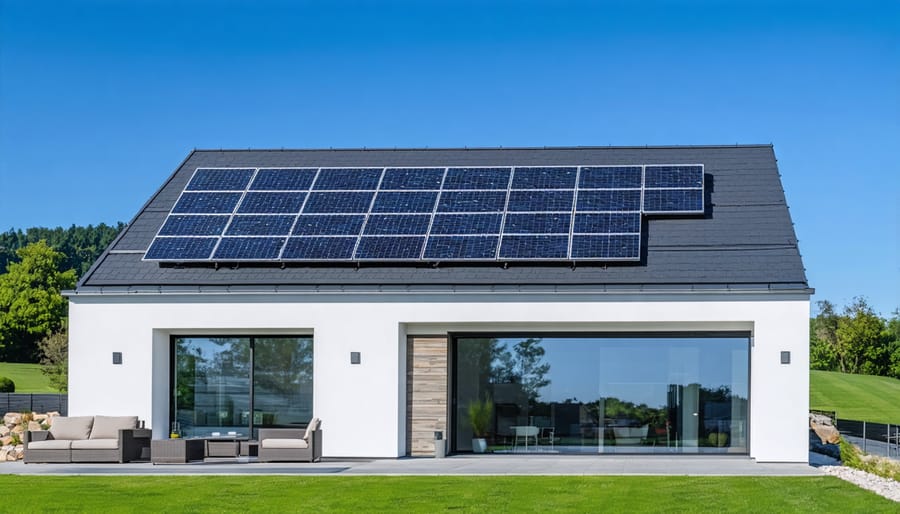
The Old Way: Just Watching Your Energy Usage
For years, homeowners relied on basic monitoring devices that showed how much energy they were using—and that was about it. These traditional systems displayed your electricity consumption on a screen or app, much like checking your bank balance. You could see the numbers go up and down throughout the day, but you were left to figure out what to do with that information on your own.
Think of it as having a fitness tracker that only shows your steps without any guidance on improving your health. These older solar energy management systems were passive observers rather than active helpers. They’d tell you when your air conditioner was using lots of power, but they wouldn’t actually do anything about it.
The problem? Data alone doesn’t save you money. You’d need to constantly check the display, manually adjust your thermostat, remember to turn off devices, and basically become your own energy manager. It was time-consuming and frankly exhausting. Most homeowners would check their monitor enthusiastically for the first week, then forget it existed—missing out on potential savings while their energy bills stayed stubbornly high.
The New Way: Your Home Making Smart Decisions
Traditional home energy systems constantly send information to distant servers, wait for analysis, then receive instructions back—a process that can take precious seconds or even minutes. Modern energy management systems work differently. They process information right in your home, making split-second decisions without any wait time.
Think of it like having an experienced household manager living with you instead of calling someone across town for advice. When your solar panels suddenly generate extra power, your system instantly redirects that energy to charge your battery or run your dishwasher—no delay, no wasted opportunity.
This immediate response means you capture every bit of available solar energy and avoid using expensive grid power during peak hours. Your home essentially runs itself, constantly optimizing without you lifting a finger. The system learns your patterns—when you typically run the laundry, when you need hot water, when you’re home—and automatically adjusts to save you the most money. It’s like upgrading from a basic thermostat to having an energy expert making thousands of tiny, perfect decisions every single day.
How Edge Computing Works in Your Home (Without the Tech Talk)
Think of It as a Smart Thermostat for Your Entire Energy System
You already know how a smart thermostat works—it learns your preferences, adjusts temperatures automatically, and makes decisions right in your home without constantly checking with the cloud. Edge-based energy management systems work the same way, but for your entire home’s energy ecosystem.
Instead of just controlling your heating and cooling, these systems make split-second decisions about your solar panels, battery storage, and major appliances—all locally, on a device in your home. When your solar panels generate excess electricity at noon, the system instantly decides whether to charge your battery, run your dishwasher, or send power back to the grid—without waiting for instructions from a distant server.
This local processing means faster reactions to changing conditions, better privacy since your energy data stays home, and reliable operation even when your internet goes down. Just like your thermostat doesn’t need Wi-Fi to keep you comfortable, edge devices keep optimizing your energy use regardless of connectivity issues.
Why Faster Decisions Mean More Savings
Your home’s energy situation changes constantly—clouds pass over your solar panels, your air conditioner kicks on, electricity rates shift throughout the day. Traditional energy systems check in every few minutes to make adjustments, but modern edge computing systems react in milliseconds. That speed difference translates directly into money saved.
Think of it like catching rainwater. If you react slowly, you miss opportunities and overflow the bucket. When your system responds instantly, it captures every drop of solar energy your panels produce and directs it exactly where it’s needed most. Those millisecond decisions mean your batteries charge during the sunniest moments, your dishwasher runs when electricity is cheapest, and you avoid pulling expensive power from the grid during peak hours.
Here’s a real-world example: Your electric vehicle arrives home at 5 PM when grid rates spike. A fast-responding system immediately recognizes this and draws power from your batteries instead—batteries that were strategically charged earlier when solar production was high and rates were low. That single decision saves you several dollars, and it happens automatically, dozens of times per day.
The cumulative effect is impressive. Homeowners with millisecond-responsive systems typically see 15-30% better energy cost savings compared to slower systems, simply because they’re making smarter decisions thousands of times faster. It’s not about working harder—it’s about working smarter, in real-time.
Real Benefits You’ll Actually Notice
Your Solar Panels Work Harder for You
If you have solar panels on your roof, you want every ray of sunshine to translate into savings. That’s where edge-based energy management systems shine. Instead of sending excess solar power back to the grid at lower rates, these smart systems instantly identify where electricity is needed in your home right now—whether that’s running your dishwasher, charging your electric vehicle, or powering your air conditioning.
Think of it as having an intelligent traffic controller for your electricity. The system makes split-second decisions about where your solar energy should go, prioritizing your home’s needs first. This means you’re using more of the clean energy you’re producing rather than buying expensive power from the grid during peak hours.
The best part? This all happens automatically in the background. You might notice your water heater kicks on during the sunniest part of the day, or your pool pump runs when solar production is highest. These aren’t coincidences—your energy management system is working behind the scenes to maximize your solar investment and minimize your electricity bills.
Battery Storage That Actually Pays Off
Modern battery storage systems equipped with edge computing don’t just store energy—they strategically manage it to maximize your savings. Here’s how it actually works: your system learns when electricity rates are lowest (typically late at night) and charges your battery during those hours. When rates spike during peak demand times, it automatically switches to battery power, keeping your costs down without you lifting a finger.
The real magic happens with intelligent battery management that makes split-second decisions. During a cloudy afternoon when your solar panels underperform, your system can tap into stored energy rather than expensive grid power. Some systems even predict upcoming weather patterns to ensure your battery is fully charged before storms. For homeowners with time-of-use rates, this translates to hundreds of dollars saved annually—the battery essentially pays for itself faster by acting as your personal energy arbitrage expert, buying low and selling high automatically.
Set It Once, Save Forever
One of the biggest misconceptions about home energy management systems is that they require constant babysitting. The reality? Modern systems with edge computing do the heavy lifting for you. Once you complete the initial setup—which typically takes less than an hour—your system quietly works in the background, learning your household patterns and making smart decisions automatically.
Think of it like a thermostat that programs itself. Your energy management system analyzes when you use the most power, when electricity rates are lowest, and when your solar panels are producing peak energy. It then automatically adjusts battery storage, appliance timing, and energy distribution without you lifting a finger. No apps to check multiple times a day. No manual switches to flip.
The system adapts to seasonal changes too. As daylight hours shift or your usage patterns evolve, the technology adjusts accordingly. You’ll simply notice lower energy bills each month—the ultimate “set and forget” experience. For homeowners juggling busy lives, this automation means you get all the financial and environmental benefits without adding another task to your daily routine.
What These Systems Actually Do in Your Home

Morning to Night: A Day in the Life
Your home energy system is working smartly from sunrise to sunset, making hundreds of small decisions that add up to real savings. Here’s how a typical day unfolds.
At 6:00 AM, your system notices electricity rates dropping to their overnight low. It quietly powers up your water heater and charges your electric vehicle, taking advantage of cheap energy before you even wake up. Meanwhile, it’s already analyzing the weather forecast—today will be sunny, so it knows your solar panels will produce plenty of power.
By mid-morning, your solar panels are generating more electricity than your home needs. Instead of sending that excess back to the grid at a low rate, your system stores it in your home battery for later use. It’s essentially banking free energy for the expensive evening hours.
Around 3:00 PM, the system predicts the afternoon energy price spike. It automatically shifts your air conditioning to run at slightly reduced capacity, drawing from your stored solar power rather than buying expensive grid electricity. The temperature change is barely noticeable—maybe one degree—but the savings add up.
As evening arrives and your family returns home, your system seamlessly switches to battery power during peak rates (typically 4:00-9:00 PM when electricity costs the most). You’re cooking dinner, running the dishwasher, and watching TV—all powered by the sunshine your panels captured earlier.
This isn’t science fiction. It’s what modern energy management systems do every single day, automatically.
Handling the Unexpected
Life doesn’t always go according to plan—clouds roll in unexpectedly, your teenager decides to blast the air conditioning while charging an electric vehicle, or the neighborhood loses power during a storm. This is where edge computing in your home energy management system truly shines.
Traditional systems that rely solely on cloud-based decision-making can lag by several seconds when conditions change. That might not sound like much, but when a cloud suddenly blocks your solar panels, those seconds of delay can mean drawing expensive grid power unnecessarily or draining your battery when you didn’t need to.
Edge-based systems react in milliseconds. When clouds pass over your roof, the system instantly shifts to battery power or reduces non-essential loads before you’d even notice a flicker. If someone suddenly turns on multiple appliances, it automatically balances the load to prevent drawing from the grid during expensive peak hours.
During grid outages, edge computing becomes your home’s independent brain. It doesn’t need an internet connection to keep your essential systems running—it already knows your priorities and makes smart decisions locally. Your refrigerator stays cold, your medical equipment keeps running, and your phone stays charged, all while maximizing how long your battery lasts.
Think of it as having an experienced energy manager living in your home, constantly watching and adjusting in real-time, ensuring you always get the most value from your solar investment regardless of what surprises the day brings.
Setting Up Your Smart Energy System
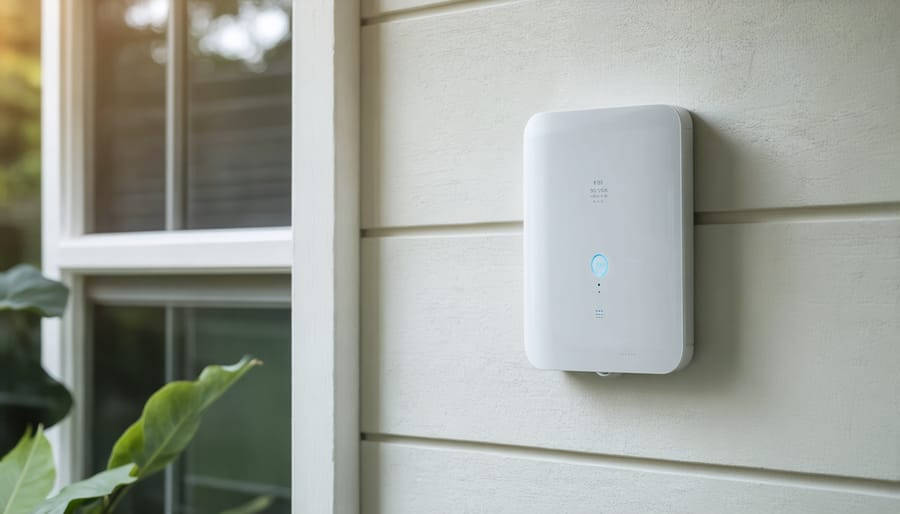
What You Need to Get Started
Getting started with a home energy management system is simpler than you might think. First, you’ll need an existing solar panel system or be planning to install one—these systems work best when paired with renewable energy sources. A reliable internet connection is essential, as your energy management system will use it to monitor energy flow and make smart decisions about when to store or use power.
You’ll also want to check compatibility with your existing smart home devices. Most modern energy management systems work seamlessly with popular smart thermostats, EV chargers, and major appliances. The good news? You don’t need to replace everything at once. Many homeowners start with their solar panels and gradually add compatible devices over time.
Finally, consider whether you have or plan to install a home battery system. While not absolutely required, batteries maximize your savings by storing excess solar energy for evening use. The installation itself is typically handled by certified professionals who’ll ensure everything connects properly and works efficiently from day one.
Working With Your Existing Solar Setup
Good news for solar owners: modern energy management systems are designed to work seamlessly with your existing solar installations. You won’t need to replace your panels or inverters to take advantage of these smart technologies.
Most energy management systems connect directly to your current solar setup through your inverter or electrical panel. The installation process is typically straightforward—think of it like adding a smart thermostat to your home rather than renovating your entire HVAC system. Many homeowners have their systems up and running within a few hours.
These systems are compatible with all major solar panel brands and battery storage solutions. They simply layer on top of what you already have, gathering data and making intelligent decisions to optimize your energy use. Whether you installed solar panels last year or a decade ago, you can benefit from this technology without starting from scratch. This compatibility means you can enhance your solar investment’s value immediately while protecting the equipment you’ve already purchased.
Common Concerns Homeowners Have (And the Truth)
Is This Too Complicated for Me?
Not at all! Today’s energy management systems are designed with everyday homeowners in mind, not engineers. Most systems feature intuitive smartphone apps with simple dashboards showing your energy use, savings, and system status at a glance—think of it like checking your bank account, but for electricity. You’ll see clear visuals and plain-English recommendations without confusing technical readouts.
Even better, you’re not on your own. Professional installers handle the setup and walk you through the basics, and most companies offer ongoing customer support via chat, phone, or email. Many systems even optimize themselves automatically in the background, so you can enjoy the benefits without becoming an energy expert. If you can use a thermostat and check your phone, you can manage these systems with confidence.
What About My Data Privacy?
Here’s the good news: edge computing actually protects your privacy better than traditional cloud-based systems. Instead of sending your personal energy usage patterns to distant servers, edge computing processes everything right in your home. Your data stays on your property, under your control. Think of it like having a personal assistant who keeps your schedule private rather than sharing it with a whole company. The system still delivers all the smart features you want—like optimizing when to charge your battery or run your dishwasher—but without broadcasting your daily routines to the cloud. You get smarter energy management while keeping your household information exactly where it belongs: at home.
Will I Really Save Enough to Make It Worth It?
The honest answer? Most homeowners see their energy bills drop by 20-40% within the first year of installing a smart energy management system. That’s real money back in your pocket—typically $300 to $800 annually for an average household.
Your payback period depends on several factors: your current energy costs, local electricity rates, and whether you have solar panels. For solar-equipped homes, you’re looking at a 3-5 year payback period. Without solar, it might stretch to 5-8 years. Here’s the good news: these systems last 10-15 years or more, giving you years of savings after breaking even.
But savings aren’t just about dollars on your bill. You’ll also extend the lifespan of your appliances through optimized usage, potentially avoid costly utility demand charges, and increase your home’s resale value. Many homeowners report their systems paid for themselves faster than expected, especially in areas with time-of-use electricity rates where strategic energy management makes the biggest impact. The key is setting realistic expectations—this isn’t a get-rich-quick scheme, but a smart long-term investment in your home’s efficiency.
Edge-enabled energy management systems represent more than just a technological upgrade—they’re a smart investment in your home’s future. By combining the environmental benefits of solar power with intelligent automation, these systems help you save money while reducing your carbon footprint. The real-time decision-making capabilities mean your home automatically adjusts to use energy most efficiently, without you having to think about it.
The financial case is compelling: lower electricity bills, reduced grid dependence, and protection against rising energy costs. Meanwhile, you’re contributing to a cleaner environment by maximizing renewable energy use and minimizing waste. As utility companies increasingly adopt time-of-use pricing and grid demands continue growing, having a smart energy management system becomes not just beneficial, but essential.
If you already have solar panels, adding edge-enabled management capabilities is one of the most cost-effective upgrades you can make. For those considering solar, choosing a system with built-in smart management from the start sets you up for long-term savings and flexibility. The future of home energy is intelligent, responsive, and sustainable—and it’s available today.


